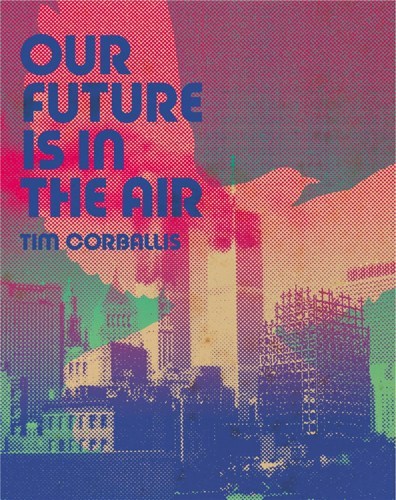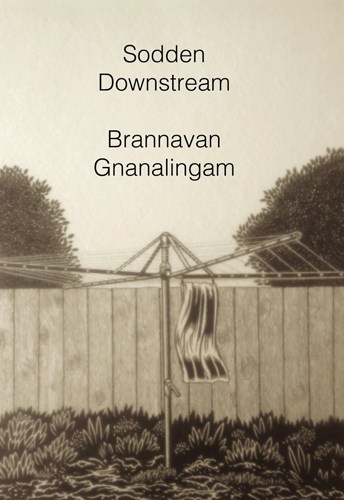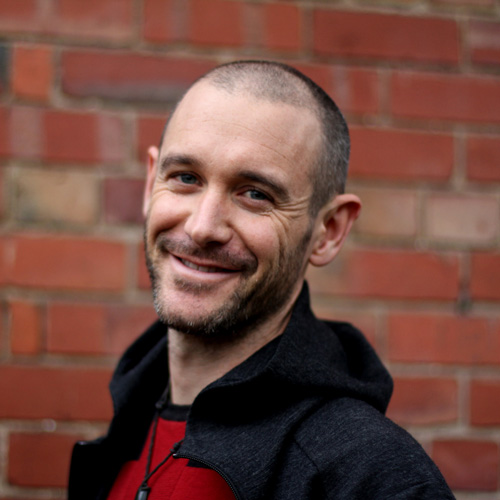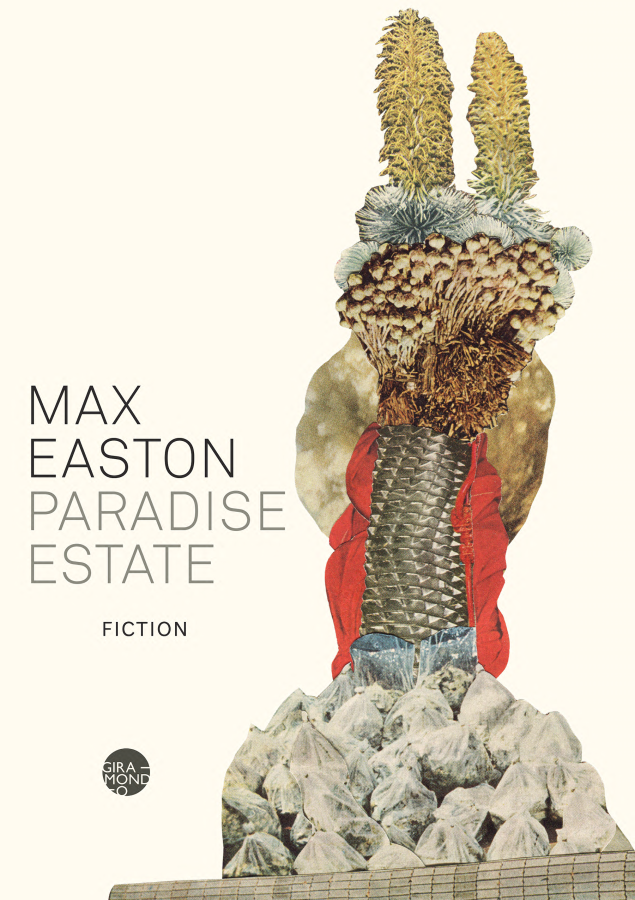Well I haven’t fucked much with the past,
But I’ve fucked plenty with the future
— Patti Smith
The neo-Gothic cathedral at Christchurch’s heart is a ruin. The spire remains sheared off, the front cracked open. Pigeons clatter in and out at dusk. Though new buildings rise on all sides, props and struts still gird the stone façade like some appalling Victorian treatment for broken bones. The wounded cathedral persists as an accidental monument to the 2011 earthquakes which killed 185 people, and to the ruin of the future on which Christchurch was premised. Compared to its founders’ vision of a pre-Industrial Revolution English town, the city is gradually becoming more globalised and diverse. More than half of those who died in the rubble were from overseas. Christchurch’s Asian, Māori, and Pasifika populations are rising, though they remain small. The process of welcoming and settling refugees in Christchurch restarted in early 2019: a small marker of the city’s progress towards stability and hope.
In March, two thousand children gathered at the cathedral’s base as part of the global school strike for climate change. They had come to demand urgent action to prevent species extinction, cyclones and wildfires, and hundreds of millions of climate refugees. The young crowd buzzed. Kids from Māori language school Te Pā ō Rākaihautū chanted out a haka conjuring the ancestor who lit the first home fires in the South Island. Speakers alternated with bands. Placards read ‘Save our Future’.
Humans have been assembling in the Square to demand different futures since the 1880s – over Māori land, the Vietnam and Iraq wars, apartheid in South Africa, South-Pacific nuclear tests. Besides our strong indigenous protest traditions, the young New Zealanders drew inspiration from Swedish school striker Greta Thunberg, who was inspired by American students marching for gun control in 2018.
Towards the end of the protest, strike co-organiser Mia Sutherland, 17, took to the stage, ready to pump up the crowd. But before she could speak, a friend hissed at her that they had to shut the rally down.
A police officer mounted the stage and and told everyone to disperse immediately. The rally was over. They were to clear the Square, go home or back to school, but avoid Hagley Park.
The kids thought they were being denied their right to protest, and a group of 250 marched on the City Council instead.
But within minutes, helicopters roared overhead, and the city lit up with sirens. Every public building and school went into lock-down. Gunmen had just opened fire in two local mosques, including one only two kilometres from the Square. The perpetrator or perpetrators were still at large. Global phone networks converged on Christchurch in fear. ‘Mass shooting in Christchurch, it’s happening right now,’ a friend gasped in my ear. ‘Call your parents.’ Video of the massacre started surfacing in people’s newsfeeds. Viewers watched through the eyes of a short, over-built Australian Islamophobe as he killed scores of men, women and children kneeling for Friday prayers. Many of those he shot were migrants to New Zealand. Some were refugees.
Climate change, migration, activism, terrorism: for people living in a small country at the bottom of the world, what does hope for the future look like in the teeth of that gale?
Tim Corballis’ speculative novel Our Future Is In The Air is set among New Zealand’s activist communities of the 1970s. An accidental technology allows scientists to capture images of the world 33 years into the future. The photographs are limited and grainy, but as the procedure improves, images appear of passenger planes striking the planned twin towers of the World Trade Centre in New York. The world obsesses over sequences of the sheer glass façades blossoming into flame, and the deaths of thousands who have not yet been born. The response is swift. Investors pull out of the fledgling aviation industry, leading to its collapse. Globalisation through cheap flight never happens: ‘We slipped back into our own past, a past of sea voyages, of isolation and distance.’ Construction on the Twin Towers halts, the building pre-emptively destroyed by a future that will now never take place. The skeletal framing remains as ‘a grotesque monument to a future catastrophe’.
The reaction of Minoru Yamasaki, the architect of the Twin Towers, captures something of the psychological impact of terrorism:
Like many architects of his generation, he worked in visions of the future. Those buildings were the culmination of what the future stood for. But now … It would have seemed to him as if all future was annihilated in that image, along with the buildings and the lives within them. All hope, all straight lines, all load-bearing structures, all people housed, everything that seemed possible with the end of the war.
In Hope in the Dark, Rebecca Solnit argues that the unknowability of the future is a precondition for hope. Rather than understanding hope as the naive certainty that everything will work out, uncertainty gives rise to the possibility for action and change. Our Future is in the Air explores the inverse proposition: what would happen to our hopeful, youthful selves if we knew how the future was going to play out?
Marcus is a middle-aged psychiatrist living with his wife Lilly and their friends and families in a communal house in Wellington in the early 1970s. Since having kids, their days of overt activism are gone. Then Marcus receives a phone call from Janet, the wife of an old activist friend. Pen has been missing for three days, and Janet doesn’t want to call the police. His disappearance may have something to do with their shared radical past: Pen advocated the use of violence, and may have been tied up with an extremist cell. A chain of old acquaintances leads Marcus and Janet variously to a Black Power gang house, a radical bookshop, a rural commune, the abandoned airport, and to the future itself.
Corballis’s detective narrative is too muddled with interesting digressions to build real momentum, but in the realm of ideas, the book soars. The search for Pen alternates with documentary-style interviews looking back at the era of the novel’s events. In one, a scientist describes how the technology used to photograph the future develops to allow objects, including humans, to be briefly forced into the future instead.
Although initially the domain of legitimate research, visiting the future via Temporal Contour Forcing (TCF) is outlawed to protect financial markets, and becomes a counter-cultural pursuit. People travel at parties, in communes, in illegal facilities tucked away in industrial estates. On the hunt for Pen, Marcus passes through a shantytown on the old airport runway and enters an aircraft hanger. In the fuselage of an abandoned, half-built passenger jet he drenches his clothes and injects a vein with ‘tracing fluid’, a lysergic acid compound which allows him to return home. Stepping into a chamber, amid the hammer of generators and the fumes of burning fossil fuels, he is hurled forward not in space, but in time.
Corballis renders time-travel through the slow disintegration and reassembly of language on the page. (It’s effective at first, though quickly becomes tiring.) Hippy travellers emerge dripping like newborns into the enormous empty data centres, power stations and shopping malls of the present day. Their clothes and their desire to change the world are anachronistic. In the 20-minute window before they’re snatched back into their own time, they try to decipher this strange new world: what are these portable communication devices? Does anyone work? What’s happened to cash? Are their children still alive? Nothing is clear. But everyone who travels returns profoundly changed.
To be an activist requires a vision of the future. Once the 1970s radicals have visited the actual future, hope collapses. Images of strong men and hyper-sexualised women are still the norm. Wealth has not been redistributed. Life is banal. ‘The technologies simultaneously promised and destroyed the future. They hurled a future at us, stunning us with it, so that, for all our talk, we were immobilised.’
This vision of a people overwhelmed by their own future resonates today. Scientists have been beaming back projections of dark futures since the 1960s when links between fossil fuels, atmospheric carbon and climate change began to solidify. Faced with projections of mass-extinctions and refugee crises, most of the us in the West remain immobilised by denial, or the certainty of our demise, or a fog of misinformation and cognitive bias. Even those of us who accept the science have been slow to grasp how fast we’re running out of time, whether governments are doing enough, how much an individual’s actions count. Uncertainty here breeds inaction, or else a naive hope that our future will be like Corballis’s future: merely disappointingly similar to the past, only with slightly better tech.
In political crises, there’s probably an equation that predicts the point where the relationship between urgency and inaction spawns people willing to take radical steps; a coefficient of direct action, if you will. As Marcus and Janet converge on Pen’s whereabouts, it emerges that his frustrations with social rather than structural change have drawn him to the Fedorovians, a militant organisation dedicated to a radical redistribution of wealth. While physical migration is rare in the absence of air travel, the Fedorovians want to open the borders in time. In their analysis, based on the work of real-life Russian Futurist philosopher Nikolai Fyodorovich Fyodorov (look him up, he’s wild), the wealth of the present is always built upon the inventions, developments and labour of the past. This amounts to the living exploiting the dead. Allowing past workers to travel freely in time means they can enjoy the cumulative rewards of their own labour. The aim is a temporal redistribution of wealth.
This might all sound highly obscure, except that it goes to the heart of our current climate crisis. Behind the complexities of warming science is the simple idea that we’ve been borrowing from the future. The young climate strikers are under no illusion that it’s the rest of their lives we’re burning every day. And between millions of kids refusing to go to school, and the potential rise of a mass civil disobedience movement in Extinction Rebellion, that coefficient of direct action may have finally been reached. Robust forms of hope don’t assume that everything is going to be okay.
The Christchurch shooter believed a crisis necessitated radical action. In his manifesto (which isn’t worth reading, because you’ll regularly hear its central ideas presented on Australian TV), he justified mass-murder on the grounds that a dangerous flood of ‘invaders’ are replacing white people. I’m not suggesting equivalence between white-supremacist eco-fascism and climate strikes or Extinction Rebellion; a genocidal response to racist paranoia is not non-violent direct action in response to scientific consensus. But it’s worth thinking about the competing visions of the future being asserted in Christchurch on that day in March.
The school strikers’ vision of the future is based on the certainty that the threat is real, but not inevitable. They believe their escalating activism can help convince our leaders to listen to the science, acknowledge the crisis, and act decisively. ‘The cost of inactivity is everything,’ their website reads. ‘We will lose our home, our cultures, our people and our land. While we still have time, we must act for the sake of future generations.’ They explicitly include in those future generations the potential climate refugees who are least to blame and most at risk.
While the Christchurch shooter’s vision for the future was regressive — a return to a more explicitly racist and genocidal past — he was primarily sowing chaos. With military-grade weapons turned on unarmed civilians, that’s not hard. Psychologically, Christchurch was already vulnerable after the earthquakes in 2010 and 2011, and the nearby Kaikoura earthquake of 2016. Close to two thirds of the local population have needed their homes rebuilt or repaired. Mental health services were already stretched. In 2018, 700 more adults and 400 more young people were referred for treatment per month compared to before the quakes. Domestic violence rates ran high.
Earthquakes are awful because everyone is in the firing line. But mass shootings are worse. To quote the urgent mental health literature review undertaken in the aftermath, they are seen as ‘purposeful and malicious, at the same time as being unpredictable … which may engender a greater sense of hopelessness’. The literature mostly comes from September 11 and mass shootings in the United States. It suggests that most people will be resilient in the long term. Those who really suffer are likely to have prior trauma, female gender, low socio-economic status, uncertainty over residency status, and / or ‘identification with a non-majority ethnicity’. The hardest hit are likely to be young female refugees.
In Brannavan Gnanalingam’s fifth novel, Sodden Downstream, a young Tamil refugee traumatised by war sets her sights on a gleaming office tower in Wellington’s CBD. Rather than blow it up, she is determined to clean it. But Sita lives 30km away, and on the night of an apocalyptic storm, flooding and high winds have closed roads and shut down public transport. Undeterred, she undertakes an epic journey through a depopulated city where anyone with an ounce of security is already safe and dry. Those left haunting the streets are an underclass of misfits with shit cars, marginal jobs or no homes.
In taking a blowtorch to the narrative of safe arrival in the West, Gnanalingam’s account of the setbacks and humiliations of a poor refugee in a rich country could have been a story of defeat. But in her own quiet, anxious way Sita is unstoppable, driven by a pragmatic and observant mind, and a backbone of steel. Catherine Robertson, writing in the New Zealand Listener, describes her as ‘hopeful’, but that didn’t ring true for me. It’s simply not an option for Sita to fail to reach work and so lose her job, and with it her apartment, her family’s tenuous stability, their right to call New Zealand home. Her husband Thiru has already lost his job. Kiwi culture is alien, its bureaucracies mysterious and arbitrary. Having grown up in a war zone, Sita now lives with her sense of hope colonised by the past. The uncertainty of the future isn’t a space for activism, but a threat.
It’s easy to read Sodden Downstream as an allegory about disaster, class and race, and what might happen when one-in-a-hundred year storms start happening all the time. The people Sita meets on the street are rough and working-class, many are Māori or Pasifika, and all have hearts of gold. In a small anticipation of the solidarity displayed after the Christchurch shootings—from flowers and candles to Mongrel Mob members providing mosque security at Friday prayers—they try to help Sita at every turn.
By contrast, the wealthy middle-class characters—lawyers, Range Rover drivers, cops, Sita’s boss—are all irredeemable arseholes. And while the novel’s moral universe may resemble that of a medieval morality play, and the line between character and caricature isn’t always clear, it all seems part of a deliberate strategy of Othering Kiwi culture. Sita and her family are rendered psychologically complex, while the Kiwis are clichés. Quibbles about characterisation are irrelevant, anyway, if you choose to read Sodden Downstream as a fable. Structurally, it’s clear who Gnanalingam thinks will welcome strangers, and who will lock their doors.
In the end, though, Sita is left alone with the storm. Having exhausted all her options, she has no choice but to walk. Though we are always privy to her thoughts, she remains mostly silent on how she became a refugee. But on her long march around the wild sea-coast, as the rhythm of walking takes over, the atrocities of the civil war she fled come flooding out in a single sentence that’s many pages long. It’s harrowing to read, and banal by turns, but mostly harrowing, and it puts everything in perspective: the pettiness of the middle-class people inconvenienced by a storm, the solidarity Sita feels with every damaged soul she meets, and why it seems perfectly reasonable to her to walk to Wellington at any cost. This is precisely what you would do after what you’ve already done, and what’s been done to you, because if you fail you might, as in a medieval morality play, end up in hell.
There is a moment near the end of Sita’s walk which stands out sharply after the shootings in Christchurch. Sita passes a man with swastikas and crosses tattooed on his neck and face. She keeps her head down and tries to remain invisible as she passes him. The young white supremacist pauses, then turns and begins to follow her. All she can hear is the sound of his boots striking the wet pavement.
Then the man’s phone rings. The ringtone is a lullaby:
Hello? … Mum … yes, I put the rubbish out … yes I ate the dinner you made … no I didn’t throw it out … I’m not telling you your cooking is shit … no I was talking about curry generally … well if these foreigners hadn’t come over and made their shitty curries, I’d have no problem eating your curry…
It’s a cheap joke, but it tells you everything you need to know about the cultural status of white supremacists in New Zealand prior to March. In his previous novel, A Briefcase, Two Pies and a Penthouse, Gnanalingam similarly mocks the Security Intelligence Service (SIS, equivalent to ASIO) as a bunch of ludicrous hacks. The title comes from a true story about the absurd items discovered in an SIS agent’s misplaced briefcase. In the novel, the one and only suspected ISIS terrorist in New Zealand is nothing of the sort. In the real world, the country’s only major anti-terrorism operation in recent decades was directed against Māori activists and environmentalists accused of running training camps and stockpiling weapons. According to the New Zealand Herald, the raids ‘would [have been] comical if they were not so chilling: unlocked doors kicked down; fences smashed a few metres from a wide-open gate; children and grannies in their nightwear, kneeling on wet concrete at gunpoint; officers yelling “you will be sent to Guantanamo!”’ Much of the operation was unlawful, and ultimately turned up a total of four hunting rifles in a region where most people own five. A reported ‘landmine’ was made of plastic and used in paintball games. Their camps were ‘comical’ and ‘amateurish’, in one informant’s words.
In Our Future is in the Air, Corballis also introduces an SIS operative, the mysterious Grey, and his counterpart in Police Intelligence, Shanks. Grey turns out to be bumbling and foolish. Shanks arrives at the commune drunk, asking if he can come in for tea. In the New Zealand imagination there are no credible spies because there are no credible threats. We never dreamed that foreign images of mass shootings were being beamed back from a future that would one day be ours.
While we grieve, and Jacinta Ardern launches a global drive against online extremism and a Royal Commission into intelligence failures, and while we protest and hold vigils and donate to the survivors who are both suffering intensely and helping heal the country with words of love, I have sensed a numbness to Christchurch, each time I have visited since March, that coexists with the activism on display. People are tired and hurt. They also believe the future can still be changed. Parliament banned semi-automatic weapons immediately. Liberal American journalists reported this with awe, inured as they are to a Groundhog Day loop of useless thoughts and prayers. They should also be reporting on New Zealand’s recent bipartisan climate legislation, mandating zero net emissions by 2050. Knowing this is still too late, in September a huge crowd of school children and adults again filled Cathedral Square for the latest climate strike. Many more stayed home. One way or another, we will each reach our own tipping point. I hope, through activism, that Sita’s memories are not images from our collective future as well.






